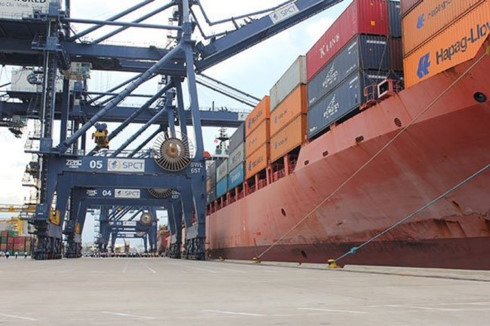
AsemconnectVietnam - The domestic business sector earned roughly US$33.1 billion in outbound sales in the first half of the year, increasing by 19.9% year-on-year, according to a newly released report by the Ministry of Industry and Trade (MoIT) on its website.
The country as a whole earned US$113.93 billion from exports in the first half of the year, an increase of 16% over the same period in 2017. Notably, the export growth rate of the domestic business sector was higher than the national rate.
As many as 20 product lines reported an export turnover of more than US$1 billion each. Phones and phone parts topped the list of hard currency earners, with exports worth US$22.5 billion.
Computers, electronic devices and spare parts came second, with US$13.45 billion, followed by textiles and garments (US$13.42 billion); machinery, equipment and components (US$7.8 billion); and footwear (US$7.79 billion).
The structure of export goods is shifting toward a positive trend, in line with the strategy for the 2011-2020 period, with a vision to 2030, according to the ministry.
Outbound sales of crude and mineral products, on the other hand, are declining, accounting for a mere 1.9% of the total exports, while sales of manufactured goods as well as the agricultural and fisheries sector are improving, making up 81.9% and 11.8%, respectively, of the total exports.
The ministry says Vietnam has made use of tariff incentives in its free trade agreements (FTAs) to expand its export markets. The country’s export turnover in the year to end-June had edged up by 17.4% to other ASEAN nations, 28% to China, 31.8% to South Korea, 9.2% to the United States and 12.3% to the European Union.
The growth rate of Vietnam’s exports to some potential markets is even much higher, such as India (up by a whopping 96.6%), Iraq (27.9%), Russia (25.4%) and Australia (22.4%), which also made significant contributions to the overall export growth rate.
Meanwhile, the export earnings of the foreign direct investment (FDI) sector, including crude oil revenue, rose by 14.5% year-on-year to an estimated US$80.86 billion.
The six-month import bill of the country was US$111.22 billion, a 10% rise over the same period in 2017. Of this, the respective import bills of the domestic and FDI sectors were some US$46 billion, up by 12.9%, and US$65.21 billion, up by 8.1%.
Most of the imported goods came from other Asian countries, accounting for a staggering 80% of the total import bill. The key markets were China (28%), the Republic of Korea (20.2%), ASEAN (13.7%) and Japan (8%).
Overall, Vietnam gained a trade surplus of US$2.7 billion in the first half of the year.
Favorable factors for export growth
MoIT forecasts growth in the production and export of industrial products---the import of materials for production activities rose sharply in the first quarter of the year, while the index of industrial production also increased significantly.
Electronic products are expected to grow further as Samsung, a key driver of manufacturing, continues to launch new products in the third quarter of the year. Its Samsung Display project is aimed at producing TV screens for export.
The ministry notes that the export of agricultural and fisheries products normally starts increasing in the middle of the year and peaks at year-end.
According to MoIT, the Comprehensive and Progressive Agreement for Trans-Pacific Partnership, along with the far-fetching European Union-Vietnam FTA, which are expected to come into effect next year, have become new magnets to draw foreign investors.
Meanwhile, domestic investments buoyed by positive sentiment, a favorable business climate and stable monetary policies and exchange and interest rates are likely to flourish.
As such, both the domestic and FDI sectors are expected to create a new production capacity for Vietnam.
Obstacles to export growth
Despite favorable factors, the country faces numerous challenges in exports. Protectionist trade measures adopted by other countries remain the main obstacle.
Many countries have set increasingly strict standards for food safety and environment protection, making it difficult for Vietnamese companies to ship their products abroad.
For example, the European Commission has issued Vietnam a “yellow card” in its worldwide fight against illegal, unreported and unregulated fishing. In addition, the United States has imposed high antidumping tariffs on frozen tra fish (pangasius) fillets from Vietnam, alongside smear campaigns by foreign media against the quality of tra fish in the European Union (EU) and Vietnamese cashew nuts in India.
With these prevailing conditions and unpredictable changes in the global market, the ministry considers it a tough task to achieve the monthly average target of US$20.45 billion in exports for the remainder of the year.
Source: Vov.vn






